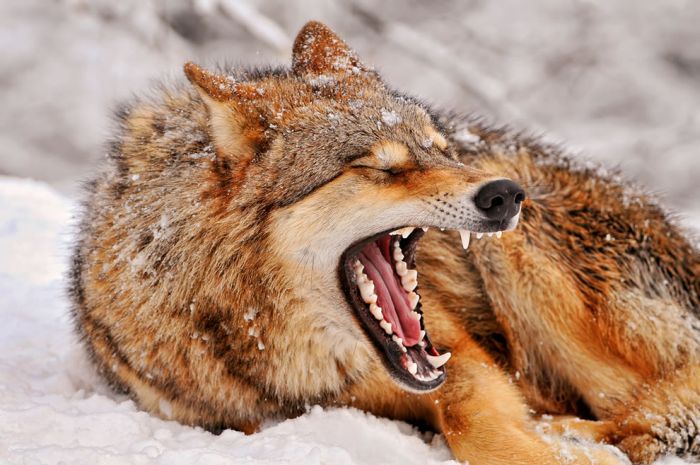|
|
Gray Wolf
|
Evolution
The most likely ancestral candidate of the gray wolf is Canis lepophagus, a small, narrow skulled North American canid of the Miocene era, which may have also given rise to coyotes. Some larger, broader skulled C. lepophagus fossils found in northern Texas may represent the ancestral stock from which true wolves derive. The first true wolves began to appear at the end of the Blancan North American Stage and the onset of the early Irvingtonian. Among them was Canis priscolatrans, a small species closely resembling the red wolf, which colonised Eurasia by crossing the Bering land bridge. The new Eurasian C. priscolatrans population evolved into Canis etruscus, then Canis mosbachensis.
This primitive wolf closely resembled the modern southern wolf populations of the Arabian Peninsula and South Asia, which were once distributed in Europe in the early Quaternary glaciation until about 500,000 years ago. C. mosbachensis evolved in the direction of Canis lupus, and recolonised North America in the late Rancholabrean era. There, a larger canid species called Canis dirus was already established, but it became extinct 8,000 years ago after the large prey it relied on was wiped out. Competition with the newly arrived gray wolves for the smaller and swifter prey that survived may have contributed to its decline. With the extinction of dire wolves, gray wolves became the only large and widespread canid species left.
The North American recolonisation likely occurred in several waves, with the most distinctive populations occurring in the periphery of the range. These populations (C. l. arctos on the high arctic islands, C. l. lycaon in the eastern forests, C. l. baileyi in the far south and C. l. rufus at the continental corner opposite the point of invasion) may represent survivors of early migrations from Eurasia. C. l. baileyi, C. l. lycaon and C. l. rufus display some primitive traits and systematic affinity to one another. Fossil remains from the late Pleistocene of large bodied wolves similar to C. l. arctos and C. l. albus occur in coastal southern California, indicating that large North American gray wolf subspecies were once widespread, and may have been driven southward by glaciation, though wolves no longer reside there. Fossils of small bodied wolves similar to C. l. baileyi have been found in a range encompassing Kansas and southern California. This indicates a late Pleistocene population flux, in which large, Arctic forms of wolf moved farther south, with smaller, warmth adapted wolves expanding as the climate moderated.
|
|









